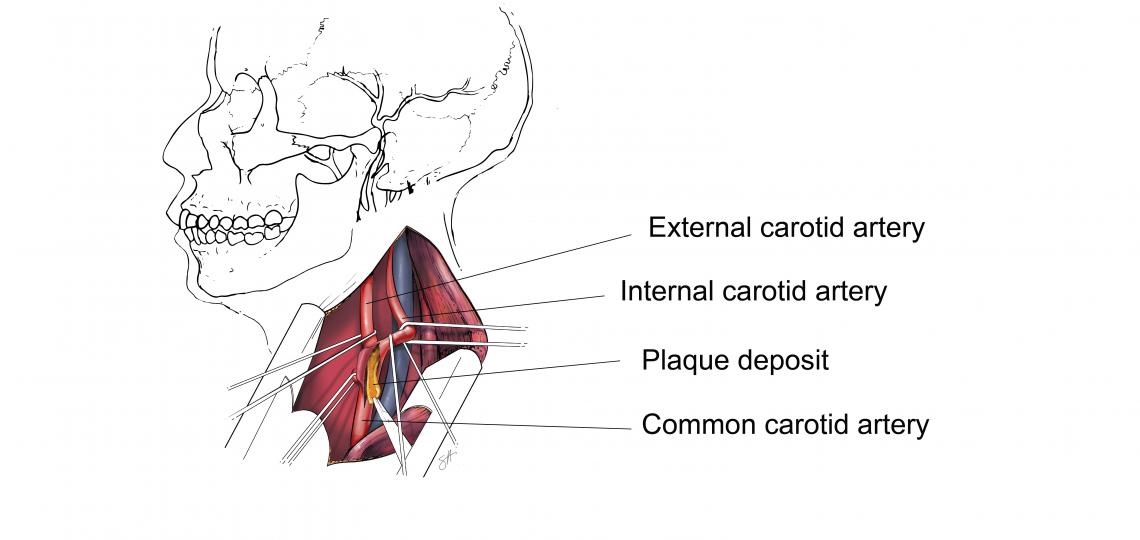What Is Carotid Enndarterectomy?
Endarterectomy (also called carotid endarterectomy, carotid artery surgery) is a surgical procedure used to open a blocked or narrowed carotid artery located in the neck. This procedure is used to restore blood flow to the brain to prevent a stroke. Carotid endarterectomy is performed in patients with severe (80 percent or more) or, at times, moderate (50-79 percent) blockage in the carotid arteries. Although it is not a cure, carotid endarterectomy has been proven effective in preventing stroke in certain patients.
Why Is Carotid Endarterectomy Performed?
Carotid artery disease occurs when plaque builds up inside the carotid arteries in the neck. There are two common carotid arteries, one on the right and the other on the left, that divide into internal and external carotid arteries. These arteries supply blood to the brain, neck, scalp and face.
Carotid artery disease is a major contributor to strokes in the U.S. Stroke occurs when the brain is cut off from its blood supply. A stroke can occur when plaque buildup narrows and hardens the carotid arteries, blocking essential blood supply to the brain. Additionally, fragments of plaque and blood clots in the carotid arteries can break off and pass through the blood stream and stick to smaller arteries in the brain. This can also block blood supply to the brain and cause a stroke.
Carotid artery may present with no apparent signs or symptoms until the blockage becomes severe. A patient may not know that he or she has the disease until they have a stroke.
Your Surgery
You will have an anesthesiologist in charge of your anesthesia. Your anesthesiologist will see you before the operation and review with you the risks and approaches. You may have general anesthesia which will put you in a deep, painless sleep during surgery. Some patients may have local anesthesia to numb only the area being worked on. You will also be given a mild sedative to help you relax. Be sure to ask the anesthesiologist any questions you may have.
On the operating table, you will lie on your back with your head turned to the side. A small cut is made in your neck to reveal the blocked part of the artery. Then, another small cut is made in the wall of the artery to expose the blockage. Your surgeon will remove the plaque by taking out the lining surrounding the blockage. The artery is then threaded closed. A natural graft (made from one of your veins) or synthetic patch may be sewn in place to secure the closure.
After the Procedure
Your hospital stay will last for one to two days. If you develop complications you may stay in the hospital longer or recover in a rehabilitation facility. Your neck and throat will be sore. This will get better over time.
You may be prescribed blood thinning medication to prevent clots. You will have a carotid ultrasound every year to check if the plaque returns in the artery.
Your medical team will advise you on post-operative restrictions. Your team will discuss this and schedule your follow-up visits to our clinic with you before you leave the hospital.
Outlook
When performed by experienced vascular surgeons carotid endarterectomy is a fairly safe procedure. Combined with healthy lifestyle changes, carotid endarterectomy may reduce your chance of having a stroke.








 Credit
Credit
